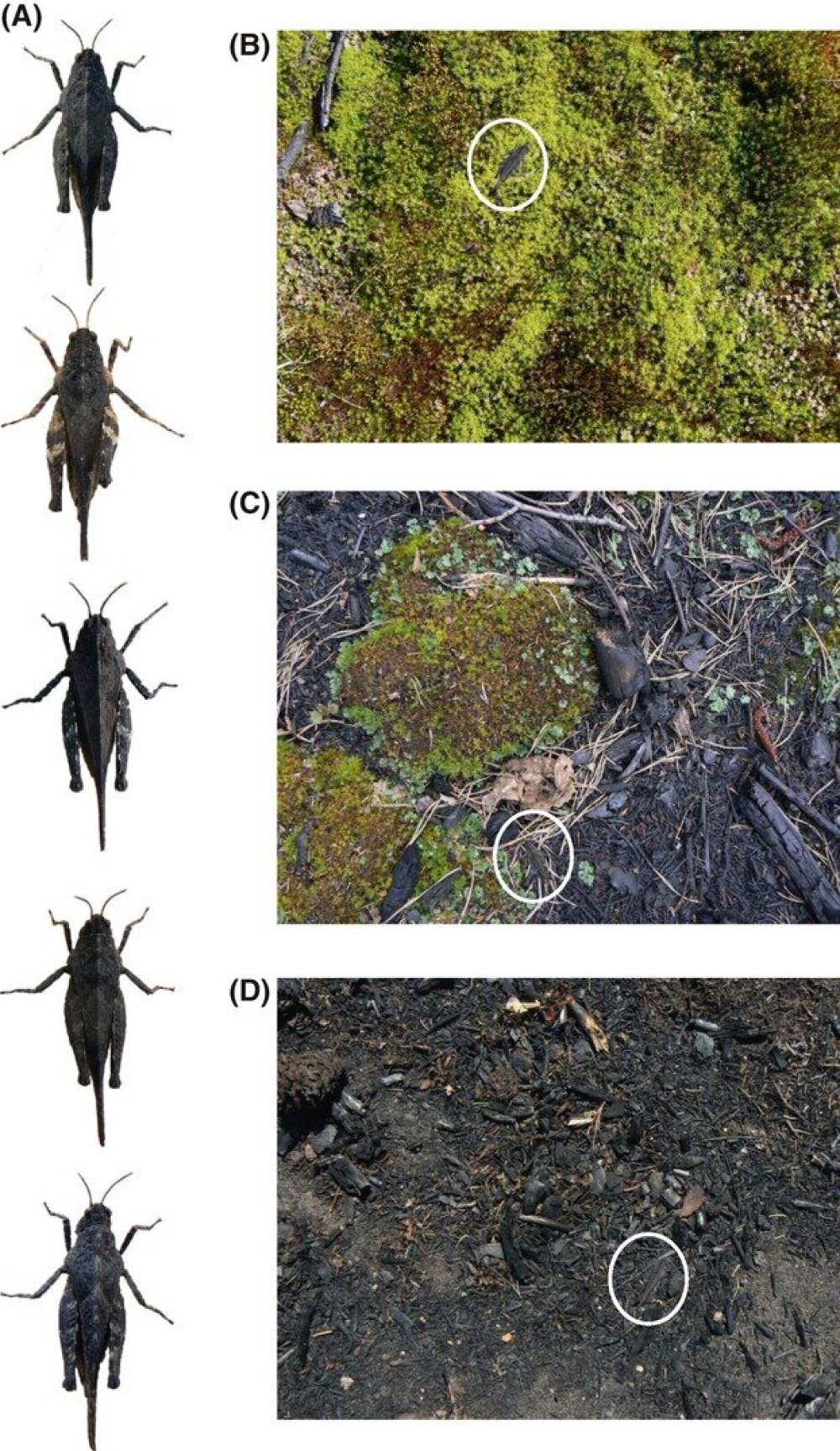Wildfires can have a devastating impact on the environment, but in some parts of the globe they are a fact of life, one that some species have been found to adapt to by changing their coloration in a phenomenon known as fire melanism.
ADVERTISEMENT GO AD FREE
The coloration that best serves an animal depends on its environment. When that environment is luscious and green or covered in brown soil, logs, and leaves, you can imagine that hues of greeny-brown come in handy, but turn that same environment to soot and you’ll suddenly be quite conspicuous.
Research has demonstrated how some species “rapidly evolve” in response to the sudden change in surroundings caused by wildfires. One such animal is the grasshopper, Tetrix subulata, that’s featured in several studies investigating fire melanism.
A 2011 study found that the frequency of melanistic grasshoppers was significantly higher in the first year following a fire, with their frequency in burned areas dropping from 50 percent to 30 percent after four years. The team suggested that a darker coloration may benefit the grasshoppers by improving their camouflage in fire-ravaged areas covered in burned foliage and soot. Gradually, as the ground recovers, that melanism becomes less useful and so drops off.

Can you spot the melanistic grasshoppers?
A second study published in 2012 assessed if that darker coloration really was an advantage when it came to evading predators. They used human participants to act as predators by hunting with their eyes for grasshoppers in photos of different environments. It seemed that evolving darker coloration was worth the effort as they proved much harder for the participants to detect. Their findings, the authors said, “implicate camouflage and predation as important drivers of fire melanism in pygmy grasshoppers.”
Adaptive melanism isn’t just triggered by fires, seen famously in the case of peppered moths during the Industrial Revolution (a phenomenon that’s been named industrial melanism). In Chornobyl, researchers have observed how a group of frogs appeared to quite rapidly turn from green to black, possibly as a protective adaptation against harmful levels of radiation.

The many colorways of squirrels.
This kind of rapid evolution is more common among animals with a faster turnover rate when it comes to producing offspring, but it’s thought fire melanism affects species outside of insects and amphibians too, including mammals. One such case is the eastern fox squirrel; a 2020 study found that melanistic individuals were positively associated with places where fires had burnt the landscape. As you can see in the photograph of their pelts above, the various environments these mammals inhabit has created a sliding scale of coloration.
ADVERTISEMENT GO AD FREE
Melanism can occur at random, too, and there are some very rare and very fancy examples out in nature. One such shiny in the game of Real Pokémon includes an ultra-rare melanistic king penguin recently filmed on South Georgia Island, which might just be one of the rarest penguins in the world.
Source Link: Fire Melanism: Why Are Dark Animals More Common Following Wildfires?